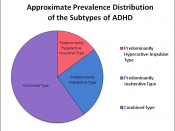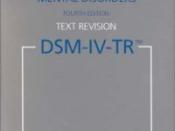[Type text] [Type text] [Type text]
Running Head: NU445 PSYCHOTHERAPY MIDTERM
Psychotherapy Midterm Examination: The Case of Mr. J
Lisa E. White
Boston College
October 1, 2014
Introduction & Use of Psychotherapeutic Case Formulation:
The process of psychotherapeutic case formulation has been recognized as a conceptualized approach to problem solving in which a theory is matched to a clients history and presenting complaint to determine an appropriate treatment plan. It alternatively offers a hypothesis about the case and the nature of the presenting complaint and is considered an alternative to the more categorically rigid approach of psychiatric diagnosis defined by the Diagnostic and Statistical Manual of Mental Disorders (DSM-V). Essentially, without a formulation, the therapist is reduced to attempting a random theory of interventions. Yet, it cannot go without being said that the first step in formulation is an accurate, working diagnosis.
While although the DSM-V is the standard diagnostic tool for mental disorders, case formulation strays from the purely descriptive, theoretical DSM criteria that "fails to acknowledge the cause of the patients presenting problems and the practical art of prescribing a particular treatment approach" (Wheeler, 2014, p.129).
Alternatively, case formulation is grounded in a more holistic approach to assessment with enough sensitivity and specificity that the uniqueness of the individual is forefront and a complete picture emerges of what is required to assist this client during this time (Wheeler, 2014, p.130). The result is an integrated assessment that allows the clinician to adjust therapeutic modalities to the client's unique, inherent needs. Through the use of case formulation in the case of Mr. J, treatment is focused, addressing central themes and collaborative, appropriate interventions and allows the clinician to best understand the nature of the therapeutic relationship and to anticipate possible resistance that are specific to not only this proposed...


